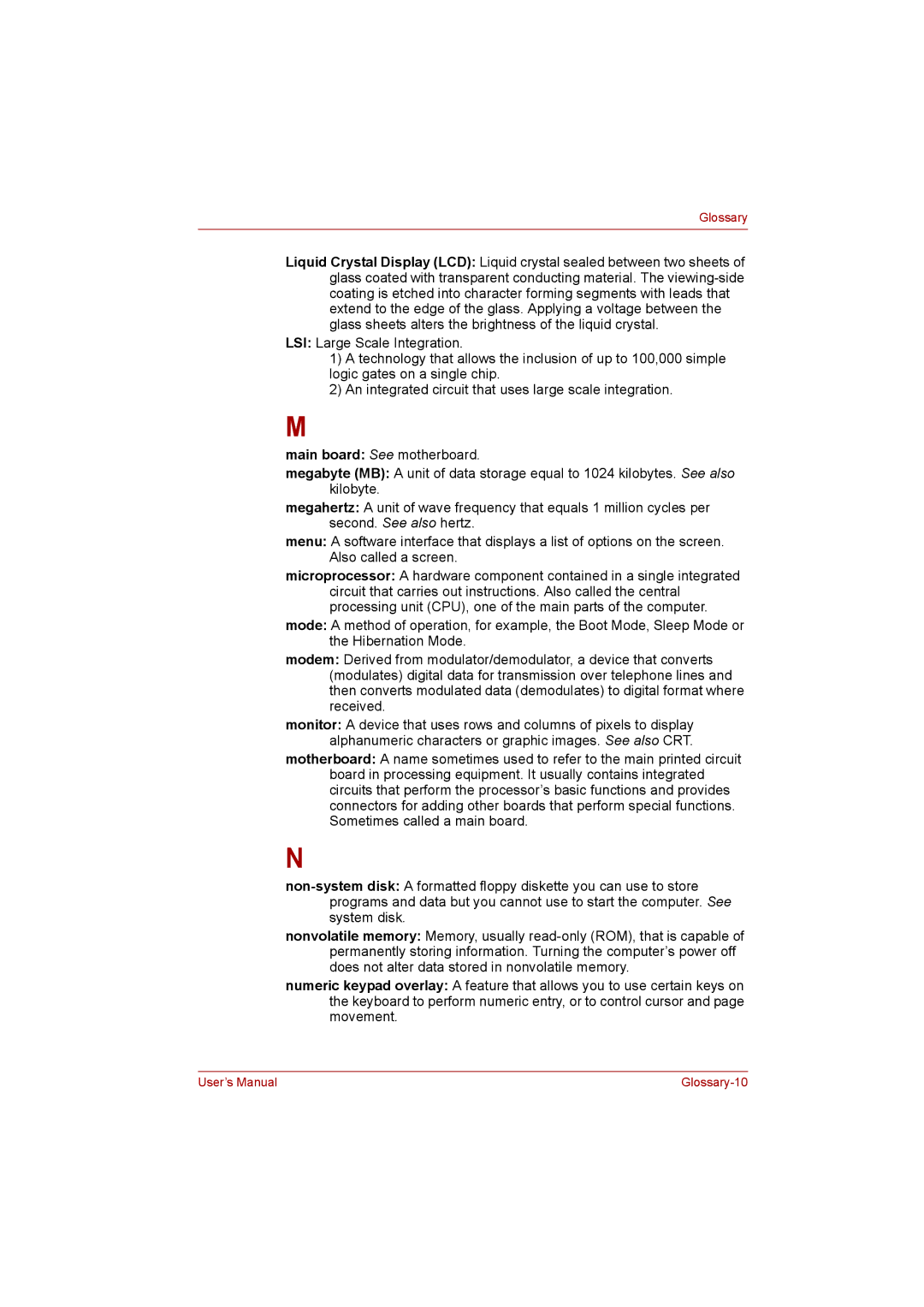
Glossary
Liquid Crystal Display (LCD): Liquid crystal sealed between two sheets of glass coated with transparent conducting material. The
LSI: Large Scale Integration.
1)A technology that allows the inclusion of up to 100,000 simple logic gates on a single chip.
2)An integrated circuit that uses large scale integration.
M
main board: See motherboard.
megabyte (MB): A unit of data storage equal to 1024 kilobytes. See also kilobyte.
megahertz: A unit of wave frequency that equals 1 million cycles per second. See also hertz.
menu: A software interface that displays a list of options on the screen. Also called a screen.
microprocessor: A hardware component contained in a single integrated circuit that carries out instructions. Also called the central processing unit (CPU), one of the main parts of the computer.
mode: A method of operation, for example, the Boot Mode, Sleep Mode or the Hibernation Mode.
modem: Derived from modulator/demodulator, a device that converts (modulates) digital data for transmission over telephone lines and then converts modulated data (demodulates) to digital format where received.
monitor: A device that uses rows and columns of pixels to display alphanumeric characters or graphic images. See also CRT.
motherboard: A name sometimes used to refer to the main printed circuit board in processing equipment. It usually contains integrated circuits that perform the processor’s basic functions and provides connectors for adding other boards that perform special functions. Sometimes called a main board.
N
nonvolatile memory: Memory, usually
numeric keypad overlay: A feature that allows you to use certain keys on the keyboard to perform numeric entry, or to control cursor and page movement.
User’s Manual |
